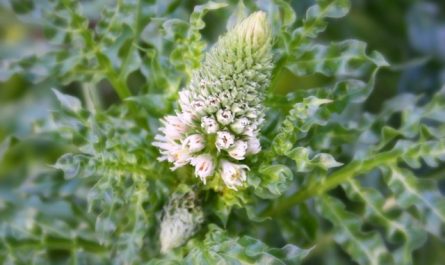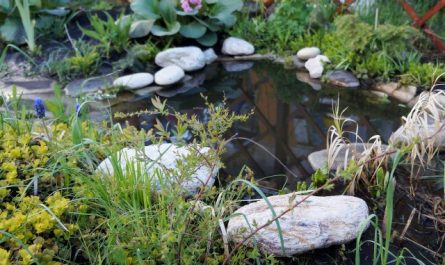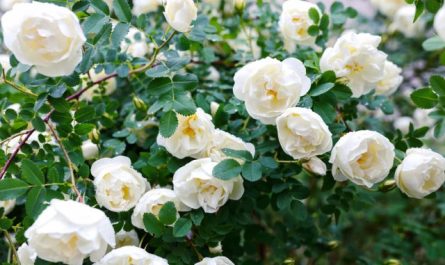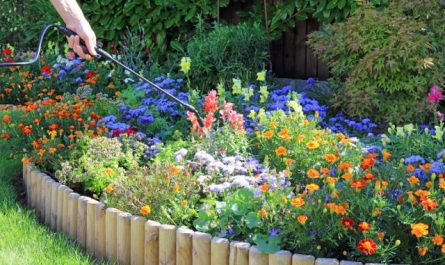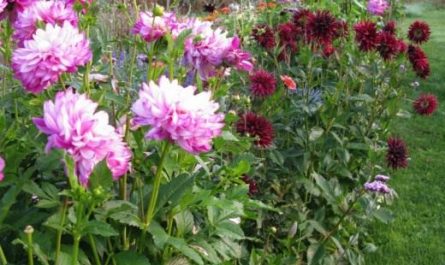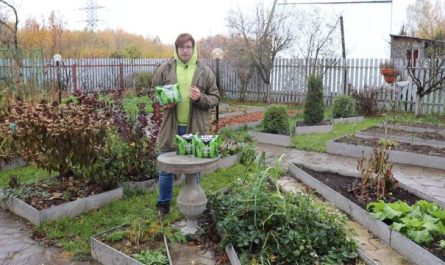It is important to create good initial starting conditions for planting ground cover perennials. The soil should be clean, free of rhizome weeds (couch grass, goutweed), and the planting material should be of very good quality. In the year of planting, care will be needed: weeding, watering, possibly fertilizing.

Satin and silk
Smilacina and Mayniki produce dense, stable clumps of broad, shiny leaves. The flowers of all species are white, collected in small, elegant inflorescences, and appear at the end of May. The plants are unpretentious and winter-hardy.
Similar to Mayniks in their growth pattern are the spectacularly flowering Solomon’s seals – the clumps grow to the sides with the help of a branched rhizome located in the upper soil layer. In addition to Solomon’s seal, changeable Solomon’s seal and other tall species, the dwarf Solomon’s seal low is of interest, especially for small areas.
Disporum smilacina and Disporum smilacina cannot boast spectacular flowering, but if the first autumn frosts usually pass your garden, then the clump decorated with straw-yellow leaves will be decorative in a new way. At this time, the fruits are clearly visible – shiny berries: black in Disporum smilacina and red in Disporum smilacina.

Leather
Perennials with dense, leathery and, as a rule, wintering leaves are especially valuable, as they are decorative from snow to snow. Recently, numerous varieties of popular bergenia have become available. Their rhizome is located superficially, so bergenias only need a very small layer of nutritious soil. It is worth considering that they bloom weaker in strong shading.

But liverworts will delight you with abundant flowering even in the shade. For our purpose, the noble liverwort is most suitable. In perennial plantings, you can quite count on a stable increase in the occupied area with the help of self-seeding – ants willingly drag away the seeds. Terry forms of liverworts do not set seeds.
Self-seeding helps the round-leaved saxifrage to spread. Its neat bushes, crowned in June with a cloud of small white flowers on high peduncles, are appropriate everywhere, easily coexisting near or even inside neighbors’ clumps. Saxifraga umbrosa grows into a ground cover, blooms already in June, the delicate inflorescences are especially graceful in contrast to the dense leathery leaves. The variegated form grows faster, but has an overly “garden” appearance, ill-suited for natural-style plantings.

European asarum is long-lived, shade-loving and unpretentious, and in addition has evergreen leaves of an original shape – they resemble a hoofprint.
Hellebores bloom early, immediately after the snow melts. Among the stably blooming, resistant and long-lived in our climate are the eastern and black hellebores. They develop better on nutritious non-acidic soils. The clump grows rather slowly, but from the age of 5-6 years the plants give abundant self-seeding. Second-year seedlings can be carefully planted in the spring. Dense leathery leaves do not always look good after wintering, but the plants will not suffer at all if they are cut off.

With pattern
The non-aggressive growth pattern is typical of the spotted deadnettle. It has varieties with silver or golden leaves, blooms in June with purple, pink or white flowers. The yellow deadnettle is undemanding and much more active. It is suitable only for large spaces, where it will quickly create a ground cover. Leaves with a silver pattern, flowers are light yellow.

Sugar lungwort slowly builds up a clump, the leaves are soft, with silver spots. For our purposes, the natural species and old ones close to it are suitable. Moreover, varieties with patterned leaves repeat varietal characteristics well when self-seeding. They grow well in partial shade.

